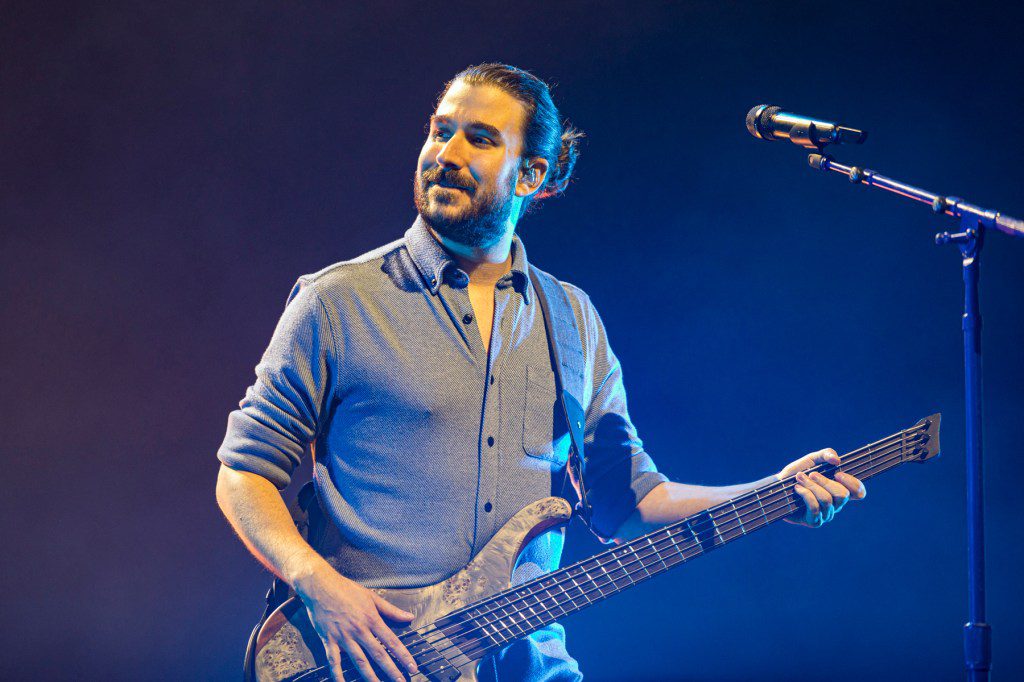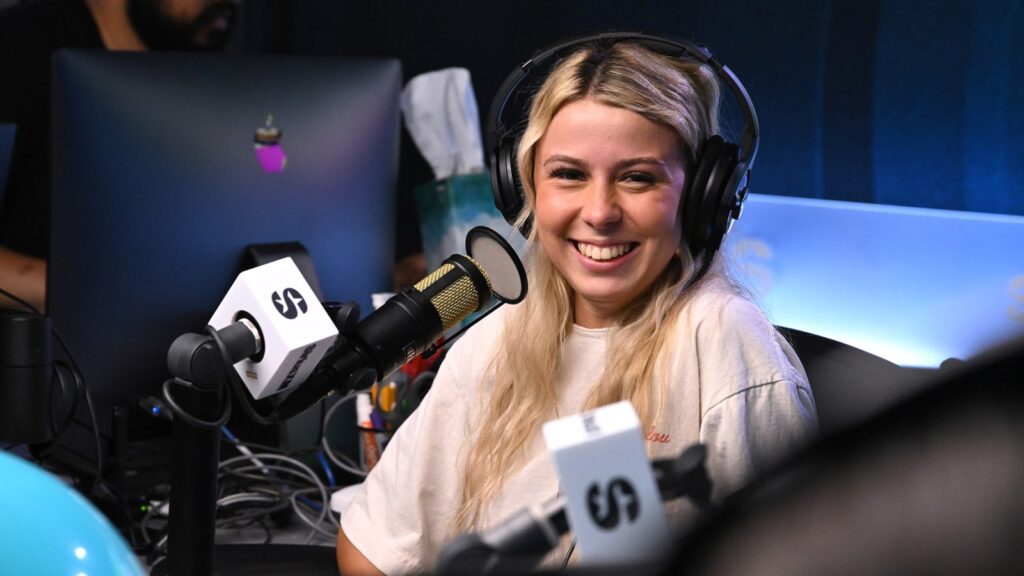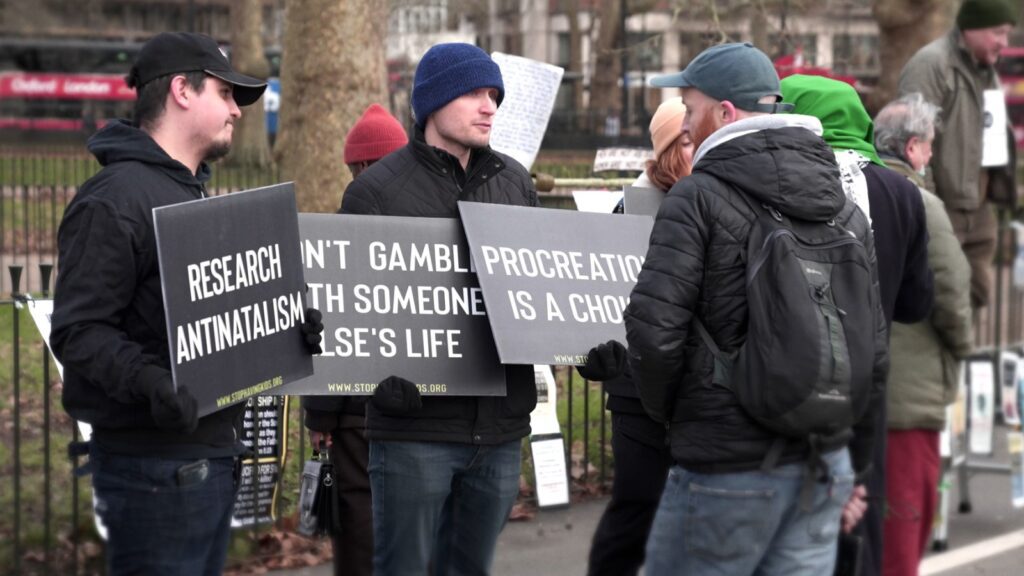This Indie-Pop Star Wants to Turn Audiences Into Climate Activists
It’s a blustery, drizzling day in New York City and at Columbia University, students scattered across the Great Lawn are beginning to run for cover. But on the 13th floor of the International Affairs Building, the gentle pattern of rain is almost completely drowned out by the hum of students getting ready to learn. The cozy room is preparing for a workshop, with a signup sheet getting passed around and back and forth small talk about the United Nations motorcades blocking streets by the dozen filling the air. There are chairs pushed tightly together around a long conference-like table. There’s a PowerPoint already queued up on the warm projector. There’s even a small table with pizza in the back that students can — and do — grab gratefully as they make their way inside. But as one of the presenters stands up and addresses the room, it’s clear the day’s goal is a bit loftier than the tight space and casual space belies.
His name is Adam Met, a professor of climate advocacy at Columbia. And we’re at his climate workshop, a condensed version of the seven-week course he usually teaches every fall. But 8 weeks ago, he stood in front of a much larger audience: a sold-out show at Madison Square Garden. At what he calls his “night job,” Adam performs alongside his younger brothers Jack and Ryan as AJR, an indie-pop band with over 8 million monthly listeners on Spotify. But offstage, Met is using his skill in both spaces to change what climate awareness in the music industry can look like.
“The music industry will live and die by partnerships around sustainability, not solving the problem in an insular way,” Met says.
While AJR has been making music since 2005, it’s taken the group almost two decades to find their recognizable sound of genre-blending electronic pop beats. Best known for commercial hits like “Weak,” “World’s Smallest Violin,” and the unofficial March For Our Lives anthem “Burn The House Down,” the group started in a small New York apartment not far from Madison Square Garden. The three brothers were extremely musical growing up, learning multiple instruments and a love of the beat from their father. The three eventually started to busk at Washington Square Park, collecting cash tips for singing covers of popular radio hits and tap dancing. They eventually collected enough money to purchase recording equipment and slowly transformed their parents’ apartment into a legitimate recording space.
After posting popular covers online, AJR mixed, produced, and released their own pop-electronic singles to steadily growing success, moving from half-full bars to staple venues like Terminal 5. Their debut album Living Room was released in 2015, and jump-started the brothers’ careers from indie-pop unknowns to multi-platinum recording artists, with five independently released albums and headline tours. And in between, Met completed what he calls the “incredibly difficult” task of finishing his undergraduate degree, his master’s, and his PhD in International Human Rights Law. After defending his dissertation about Indigenous participation in global renewable energy projects, instead of being thrown by the cognitive dissonance of selling out arenas and then preparing presentations for nonprofits, Met decided to lean in and target what he knew best: the music industry.
Adam Met of AJR performs on stage at Pechanga Arena in San Diego, California.
Daniel Knighton/Getty Images
“I spent a long time in school, and then I realized that I had spent years on all of this research just for three people to read it,” Met tells Rolling Stone. “As our music career continued to grow, I had more and more experiences that put me directly in touch with the impact of climate. I saw the forest fires in San Francisco, where we literally had to wear gas masks going into the venue, to the massive flooding in Athens, [Georgia], it kept this process in my mind of, ‘We need to do more. We need to do more.’”
Met’s unique focus on both climate and music culminated in the nonprofit Project Reimagined. Created in 2020 by Met and climate advocate Mila Rosenthal, the research center supports climate research and creates action campaigns on pertinent findings. It’s a field almost drowning in buzzwords, but for Met and Rosenthal, their job is simple: Every day, scientists are learning new ways to combat climate change. Planet Reimagined finds ways to turn that data into meaningful steps that people can both comprehend and actually follow through on. And if you’re looking for an audience, it doesn’t get much bigger than the close to half a million people who attended AJR’s recent stadium tour. In fact, for Met, his work touring with AJR directly proved why his climate work was necessary.
“Whether we’re building a campaign around an album or we’re engaging fans to discover the track names of our album or running through the halls of Congress trying to get a bunch of people to agree, all of this is creative problem solving,” Met says. “I don’t see them as different things, and that’s pretty much the only reason why I’m able to do both of them at the same time.”
One of Planet Reimagined’s goals is to use AJR to test a theory that they — and eventually other groups — can turn audiences into climate activists. Throughout the band’s 43-city Maybe Man Tour in 2024, there were local climate advocacy groups stationed around the arenas with one local climate-related goal that interested parties could participate in. Before the show, there was also a direct call to action with an AJR video asking fans interested in learning more about the issue to scan a QR Code. According to Planet Reimagined, 12,000 people joined in their city-specific action and 10,000 additional AJR fans used the QR code to either register to vote or sign up for informative emails on climate efforts. Concertgoers in Utah wrote letters to decrease water diversion from the Great Salt Lake, while other cities signed petitions to expand the public transit system or left voicemails for their representatives and asked for extreme heat to be declared a climate emergency. “Amplify research delivers clear evidence that musicians can inspire their fans to do things that really make a difference, and lots of those fans together can move the needle on climate,” Rosenthal tells Rolling Stone in a statement.
Met and AJR are a part of a growing cohort of musicians marshaling their fan bases into numbers for climate activism. Artists like Billie Eilish and groups like The 1975 and Coldplay have publicly committed to touring with as few emissions as possible, while also encouraging their fan bases to participate in climate awareness. Met’s hope is that as more artists — and average people — see change enacted effectively, they’ll be more interested in joining the movement. And he’s not opposed if some of that spark starts in his classroom. “This idea of in-person advocacy is so much bigger than the music industry,” Met says. “People who take our class are everyone from undergrads who don’t really know what they want to do with their life, to people who are state senators of different countries, to people who have worked in the big tech companies, to the average School of International Public Affairs student. Across the board, we’re seeing more and more people care about climate, no matter what industry they’re in. And we need all of these different types of stakeholders engaged to make change. It’s never going to be just individuals, it’s never going to be just business. It’s never going to be just nonprofits. We need everybody.”





